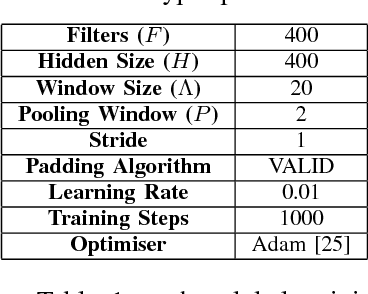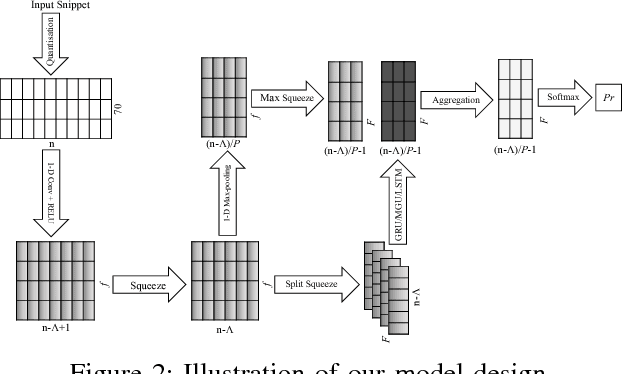Eugene Ch'ng
CRNN: A Joint Neural Network for Redundancy Detection
Jun 04, 2017



Abstract:This paper proposes a novel framework for detecting redundancy in supervised sentence categorisation. Unlike traditional singleton neural network, our model incorporates character-aware convolutional neural network (Char-CNN) with character-aware recurrent neural network (Char-RNN) to form a convolutional recurrent neural network (CRNN). Our model benefits from Char-CNN in that only salient features are selected and fed into the integrated Char-RNN. Char-RNN effectively learns long sequence semantics via sophisticated update mechanism. We compare our framework against the state-of-the-art text classification algorithms on four popular benchmarking corpus. For instance, our model achieves competing precision rate, recall ratio, and F1 score on the Google-news data-set. For twenty-news-groups data stream, our algorithm obtains the optimum on precision rate, recall ratio, and F1 score. For Brown Corpus, our framework obtains the best F1 score and almost equivalent precision rate and recall ratio over the top competitor. For the question classification collection, CRNN produces the optimal recall rate and F1 score and comparable precision rate. We also analyse three different RNN hidden recurrent cells' impact on performance and their runtime efficiency. We observe that MGU achieves the optimal runtime and comparable performance against GRU and LSTM. For TFIDF based algorithms, we experiment with word2vec, GloVe, and sent2vec embeddings and report their performance differences.
An Improved System for Sentence-level Novelty Detection in Textual Streams
Apr 30, 2016


Abstract:Novelty detection in news events has long been a difficult problem. A number of models performed well on specific data streams but certain issues are far from being solved, particularly in large data streams from the WWW where unpredictability of new terms requires adaptation in the vector space model. We present a novel event detection system based on the Incremental Term Frequency-Inverse Document Frequency (TF-IDF) weighting incorporated with Locality Sensitive Hashing (LSH). Our system could efficiently and effectively adapt to the changes within the data streams of any new terms with continual updates to the vector space model. Regarding miss probability, our proposed novelty detection framework outperforms a recognised baseline system by approximately 16% when evaluating a benchmark dataset from Google News.
 Add to Chrome
Add to Chrome Add to Firefox
Add to Firefox Add to Edge
Add to Edge